California Shovel-nosed Snakes - Chionactis
And Comparisons With Similar Snakes


Not Dangerous (Non-poisonous) Shovel-nosed Snakes do not have venom that is dangerous to most humans. |
|||||||||||||||||||||||||||||||||||||||||||||||||||||||||||||||
| Small, harmless, nocturnal snakes of open sandy deserts, rocky washes. Found mostly at night, often on desert roads. Three subspecies are found in California. Check the range map to determine which one is in your area. This snake, especially the Colorado Desert Shovel-nosed Snake, might look like the venomous coral snake (it has red saddles touching yellow saddles), but Coral Snakes have full bands instead of saddles and there are no Coral Snakes found in California. The long, flat snout will help differentiate this snake from other similar snakes - the Long-nosed snake, the Variable Groundsnake, and even the Banded Sandsnake, which may occur in California in the same habitat as the Colorado Desert Shovel-nosed Snake. |
|||||||||||||||||||||||||||||||||||||||||||||||||||||||||||||||
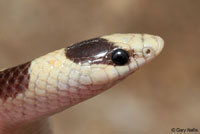 |
 |
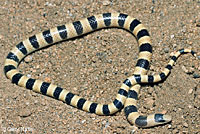 |
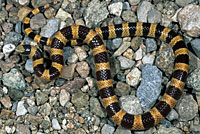 |
||||||||||||||||||||||||||||||||||||||||||||||||||||||||||||
| The snout is long and shovel-like | Colorado Desert Shovel-nosed Snake Chionactis annulata annulata |
Mojave Shovel-nosed Snake Chionactis occipitalis |
|||||||||||||||||||||||||||||||||||||||||||||||||||||||||||||
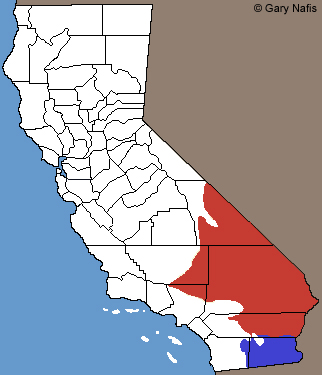 |
|||||||||||||||||||||||||||||||||||||||||||||||||||||||||||||||
| Range Blue: Chionactis occipitalis annulata - Colorado Desert Shovel-nosed Snake Red: Chionactis occipitalis occipitalis - Mohave Shovel-nosed Snake |
|||||||||||||||||||||||||||||||||||||||||||||||||||||||||||||||
| Similar Species | |||||||||||||||||||||||||||||||||||||||||||||||||||||||||||||||
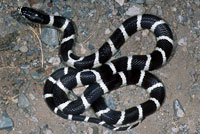 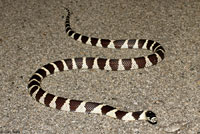 |
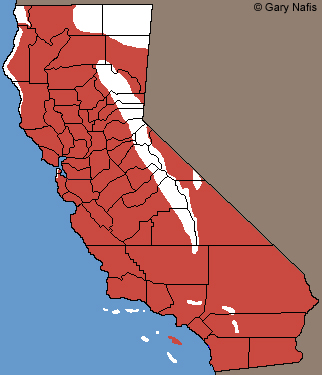 |
 Shovel-nosed Snake The head is long and flattened 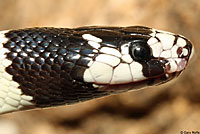 |
|||||||||||||||||||||||||||||||||||||||||||||||||||||||||||||
| California Kingsnake - Lampropeltis californiae | The California Kingsnake is much larger and its bands are less rounded, more triangular. The head is not long and flattened. Head markings are different. | ||||||||||||||||||||||||||||||||||||||||||||||||||||||||||||||
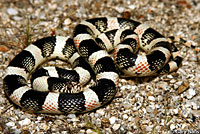 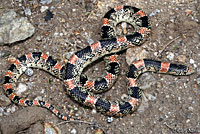 |
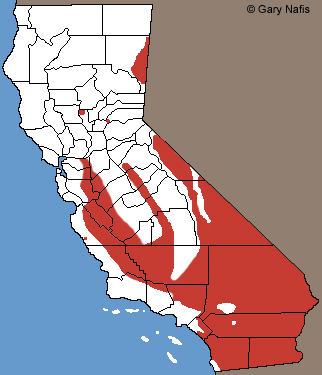 |
 Shovel-nosed Snake The head is long and flattened 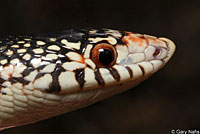 |
|||||||||||||||||||||||||||||||||||||||||||||||||||||||||||||
| Long-nosed Snake - Rhinocheilus lecontei | The Long-nosed Snake is larger in size and the bands are typically black and red, with no bands inbetween. Some have only black and white bands, but the bands are much wider. The nose is long but not as flattened, and the head markings are much different. | ||||||||||||||||||||||||||||||||||||||||||||||||||||||||||||||
 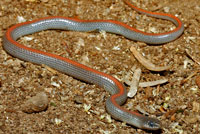 |
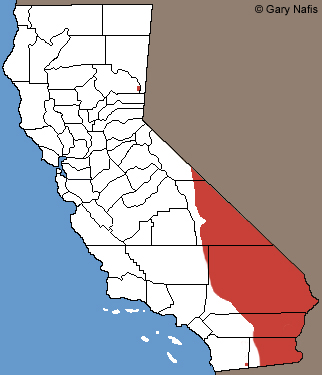 |
 Shovel-nosed Snake The head is long and flattened  |
|||||||||||||||||||||||||||||||||||||||||||||||||||||||||||||
| Variable Groundsnake - Sonora semiannulata semiannulata | Groundsnake The head is not long and flattened |
||||||||||||||||||||||||||||||||||||||||||||||||||||||||||||||
| This species has been reported from the extreme southeast corner of the state where it occurs just across the Colorado River, but its presence has not been confirmed. | 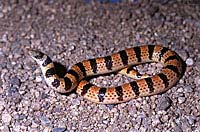 |
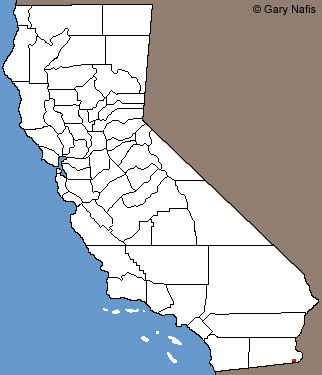 |
|||||||||||||||||||||||||||||||||||||||||||||||||||||||||||||
| Banded Sandsnake - Chilomeniscus cinctus |
|||||||||||||||||||||||||||||||||||||||||||||||||||||||||||||||
| Species Comparisons | |||||||||||||||||||||||||||||||||||||||||||||||||||||||||||||||
 |
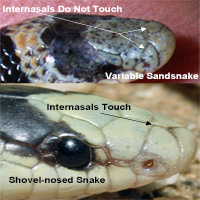 |
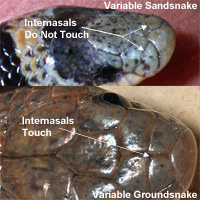 |
 |
||||||||||||||||||||||||||||||||||||||||||||||||||||||||||||
| Shovel-nosed Snake and Variable Groundsnake |
Shovel-nosed Snake and Banded Sandsnake |
Banded Sandsnake and Variable Groundsnake |
Variable Groundsnake and Black-headed snake |
||||||||||||||||||||||||||||||||||||||||||||||||||||||||||||
|
|||||||||||||||||||||||||||||||||||||||||||||||||||||||||||||||
Return to the Top
© 2000 -
